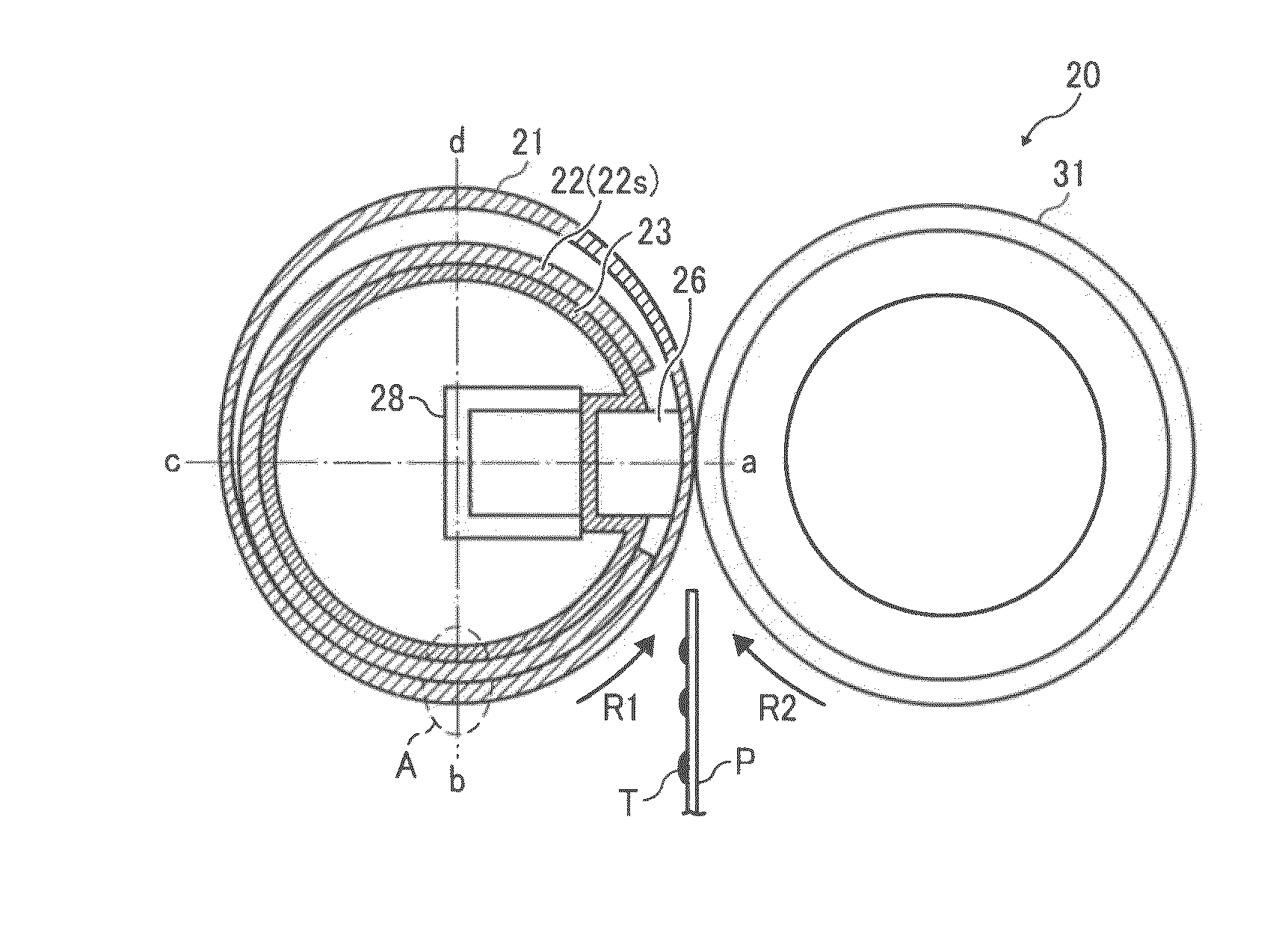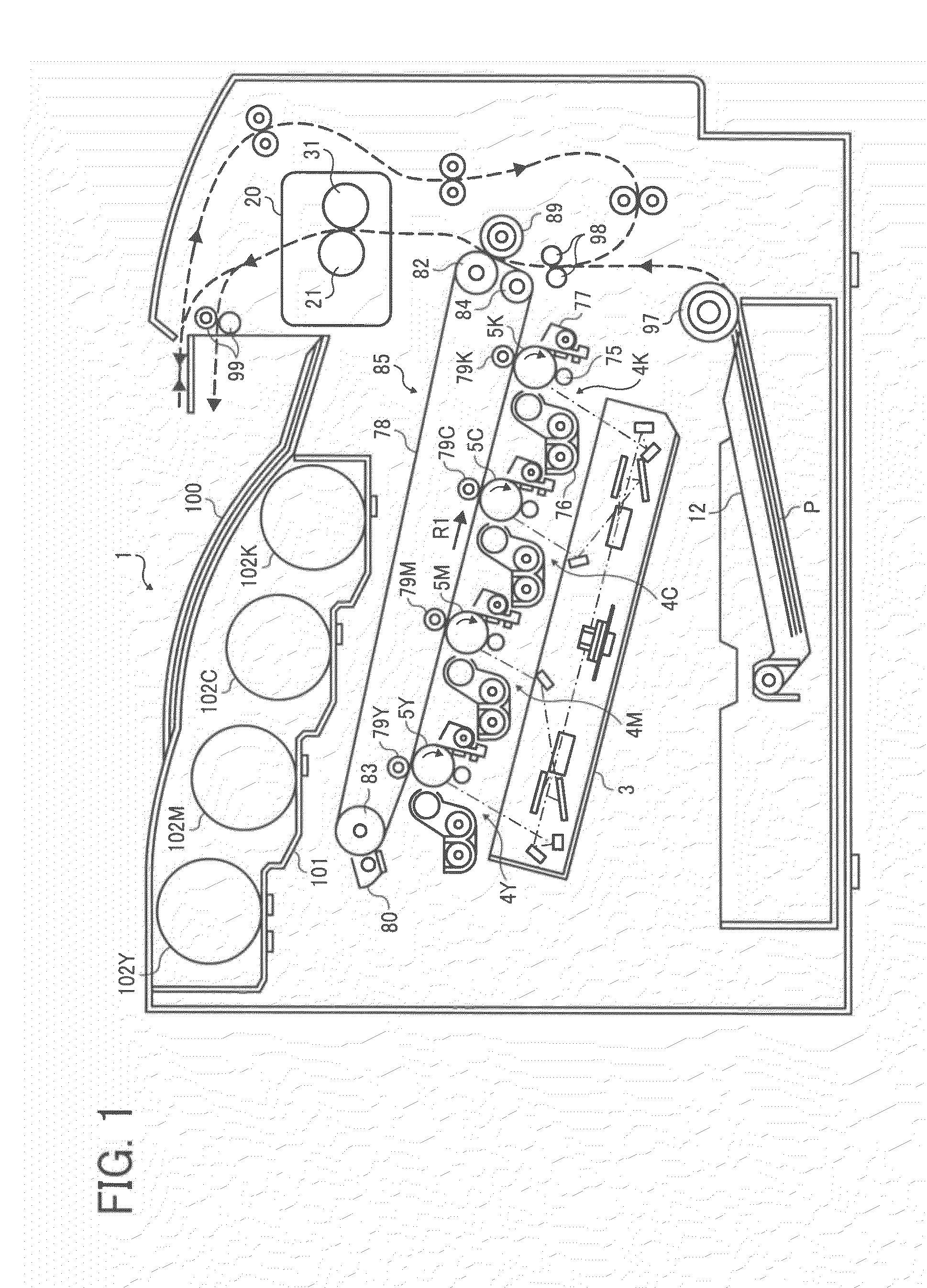Fixing device and image forming apparatus incorporating same
- Summary
- Abstract
- Description
- Claims
- Application Information
AI Technical Summary
Benefits of technology
Problems solved by technology
Method used
Image
Examples
first embodiment
[0048](First Embodiment)
[0049]Referring to FIGS. 2 to 5, the following describes the structure of the fixing device 20.
[0050]FIG. 2 is a vertical sectional view of the fixing device 20 according to a first embodiment. As illustrated in FIG. 2, the fixing device 20 further includes a laminated heater 22, a heater support 23, a contact member 26, and a core holder 28. As illustrated in FIG. 2, the fixing sleeve 21 is a rotatable endless belt serving as a fixing member or a rotary fixing member. The pressing roller 31 serves as a pressing member or a rotary pressing member that contacts an outer circumferential surface of the fixing sleeve 21. The contact member 26 is provided inside a loop formed by the fixing sleeve 21, and is pressed against the pressing roller 31 via the fixing sleeve 21 to form a nip N between the pressing roller 31 and the fixing sleeve 21 through which the recording medium P passes. The laminated heater 22 is provided inside the loop formed by the fixing sleeve ...
second embodiment
[0117](Second Embodiment)
[0118]Next, a fixing device 20-1 according to a second embodiment is described below with reference to FIG. 8. FIG. 8 is a cross-sectional diagram illustrating the fixing device 20-1.
[0119]As illustrated in FIG. 8, the heat generation sheet 22s of the laminated heater 22 is provided on the inner circumferential face of the heater holder 23, while other components as well as the operation and control of the fixing device 20-1 are similar to the fixing device 20 according to the first embodiment shown in FIG. 2.
[0120](Variation of the Second Embodiment)
[0121]As a variation of the above-described embodiment, as illustrated in FIG. 9, the laminated heater 22 (the heat generation sheet 22s) may be fixed by a retainer 25 on the inner circumferential face of the heater support 23.
[0122]FIG. 9 is a cross-sectional diagram illustrating a fixing device 20-1A according to the variation of the second embodiment
[0123]In FIG. 9, the fixing device 20-1A includes the retain...
PUM
 Login to View More
Login to View More Abstract
Description
Claims
Application Information
 Login to View More
Login to View More - R&D
- Intellectual Property
- Life Sciences
- Materials
- Tech Scout
- Unparalleled Data Quality
- Higher Quality Content
- 60% Fewer Hallucinations
Browse by: Latest US Patents, China's latest patents, Technical Efficacy Thesaurus, Application Domain, Technology Topic, Popular Technical Reports.
© 2025 PatSnap. All rights reserved.Legal|Privacy policy|Modern Slavery Act Transparency Statement|Sitemap|About US| Contact US: help@patsnap.com



